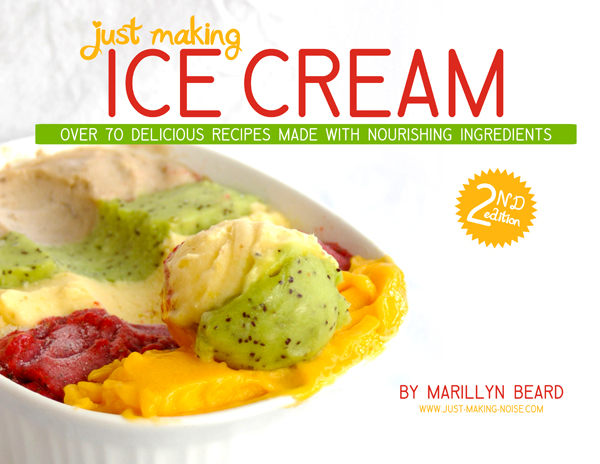

made from the nectar produced from the coconut tree (coco nucifera). Once collected, it is boiled and processed into a granule.Coconut palm Sugar is naturally low on the Glycemic Index (GI), which has benefits for weight control and improving glucose and lipid levels in people with diabetes (type 1 and type 2). Coconut palm sugars are rated as a GI 35. By comparison, most commercial Agaves are GI 42, Honeys are GI 55 and Cane Sugars are GI 68.
Coconut palm Sugars produce slow release energy, which sustains the human body through your daily activities without regular sugar “highs”, and “lows”.
The major component of coconut sugar is sucrose (70-79%) followed by glucose and fructose (3-9%) each. Minor variations will occur, due to differences in primary processing, raw material source, tree age and variety of coconut. (
source)
Palm sugar was originally made from the sugary sap of the Palmyra palm or the date palm. Now it is also made from the sap of the sago and coconut palms and may be sold as “coconut sugar.” The sugar is a golden brown paste, sold in tubes, blocks or tin cans. It may be light-colored or dark, soft and gooey or hard. As a lightly-processed product of cottage industry, it varies greatly from batch to batch.
In Thai cuisine, palm and “coconut sugar” (nahm dtahn bpeep/buk and nahm dtahn maprao) are used interchangeably. However, it may be an important distinction that “coconut sugar” is not derived from the coconut fruit itself. “Although the names are used interchangeably, palm sugar and coconut sugar are not the same. One comes from the palmyra or sugar palm and the other from coconut palm, but both are produced from the sweet, watery sap that drips from cut flower buds.”[1]
Coconut palm sugar is GI-35. The Philippine Food and Nutrition Research Institute used the following procedure to determine the Glycemix Index (GI) value of palm sugar:
- Fifty grams (240 ml) standard glucose tolerance test beverage (Medic Orange 50, Product no. 089) and fifty (50) grams of coconut palm (Cocos nucifera) sugar was fed in random order to ten (10) human subjects.
- Blood samples (0.3-0.4 ml) were collected after feeding through finger prick using a 7ml Vacutainer at zero (0) hour, and thereafter at every 15 min interval for 1 hour, and every 30 min or the next hour.
- The serum was separated from the blood using a refrigerated Effendorf centrifuge, and analyzed for glucose levels on the same day using a Clinical Chemistry Analyzer after calibration with the glucose standard (Glucofix Reagent1: Menarini Diagnostics, Firenze, Italy).
- The blood sugar levels of the ten (10) healthy human subjects given coconut palm sugar and reference glucose food samples were graphed against the time of study. The incremental area under the glucose response curve (IAUC) of the coconut palm sugar was calculated geometrically ignoring the area below the fasting level (Wolever et al.,1991). The Glycemic Index (GI) of the coconut palm sugar was calculated as GI = IAUC of the test food / IAUC of standard glucose multiplied by 100. It’s index value is 35. (source)




I love coconut palm sugar. I have the lump ones at home right now. We use them a lot in Thai desserts. You can make sweetened coconut milk and eat with honey dew or cantaloupe and crushed ice. So refreshing.
CheapAppetite – Thank you for the idea! Sounds good :o)
Funny, I bought some the other day, and I really like it. Didn’have any idea on how they made it, so your post is very interesting and informative. My mom has diabete and wondering if that would be good for her, I guess it would. Thanks for the great info!
Maybe it’s not available in your area but coco palm sugars are also available in crystal form, like regular sugar.
One of the thing you need to be aware of is the prevalence of “palm sugars” disguised as sugar coming from coconuts. There are a number of palm trees from which palm sugar is made from and only those from coco nuciferas has been studied and proven to have low GI properties.
Wow, how interesting! I’ve never heard of coconut palm sugar. Hmmm!
Thanks for the great research and thorough post. I have been looking for this info. I am liking palm sugar more and more.
Palm sugar is easy to use. Now I like the added nutrition too. I know it is still sugar, but offers far more than granualted sugar.
You have a beautiful blog.
Hey Mare, I love my coconut sugar and since I am diabetic during pregnancy I can still have something sweet without raising my sugar levels too high. So yes for diabetics it’s WONDERFUL! I have been using it exclusively since my blood sugar levels have gone up too high in this pregnancy with great success! Obviously everything in moderation, but we don’t have to go without something sweet. Love it in my ice creams!
Coco Palm Sugar – Thank you for sharing that with us! I will put a note on the post about what you said.
Linda – I’m glad the information is helpful! Thank you!
Sarah Clark – Great! Thank you for sharing your personal experience! I am so glad it is working out for you :o) How’s the pregnancy going so far?
Mare, you are a wealth of helpful information! I love this idea. Next time I’m at the health food, I’m getting this. (Time for Tom to take a honey break and try this on his oatmeal : )
Hey, I’m also submitting my application for “Next Food Network Star”… Pretty wild, hey? But say a prayer for me!
Thanks for all you share.
Hi Mare, I have tried the lump kind of coconut sugar and to use it I have grated it. But then I’m not sure if I should measure it like white sugar or brown sugar? I’ll be curious to find out how you do it. I love the low GI scale on this sugar! I’d like to find the jar kind, but so far I haven’t. For 1 lb. of lump sugar at an asian store, I pay $1.59. How does that compare to what you are buying?
Thanks for this! I just went to my local Asian supermarket and I’m so confused! I found a ton of “Palm Sugar” with no source listed – just palm sugar so I don’t know if it’s from the coconut palm or not?
From reading, it seems like palm sugar and coconut palm are different.
I did find “coconut sugar” in a can.
Can anyone help?
Hi All-
I have just stumbled upon this wonderful and informative blog entry by Marillyn and want to say Thanks! for helping to bring education to this incredible sustainable sweetener.
I am actually a producer of the first organic certified coconut sugar in the US market. Our product is pure coconut flower nectar evaporated to a fine granule. Coco Palm Sugar is 100% right that most of the commercially available palm sugars are either mixed with cane sugar for form stability or chemical preservatives ( sodium metabisulphite) for shelf life and whiter color.
Our sweetener is called SweetTree Coconut Sugar and it’s available nationally with Whole Foods, New Seasons and HEB Markets among others…Please give us a try and thanks again for getting behind this incredible sustainable sweetener!
any questions for me? you can contact me at ripple@bigtreefarms.com
ripple@bigtreefarms.com is correct in that you have to careful about scupulous suppliers that sell “blended” sugar composed of coconut and cane (brown) sugar. I personally am using the brand Index35 from the Philippines you can check them out in their website http://www.index35.com. I have removed cane sugar from my dietary routine for sometime now.
i read the blog and was inspired to try coconut palm sugar, since i’ve never heard of it, yet am always trying to “do the right thing” for my health. So i went to my local Whole Foods Market, as Mr. Ripple suggested, and purchased a bag of his coconut sugar…. I AM HOOKED!!! I love it! Any both my kids love it, which is even more important! Getting them away from cane sugar hasn’t been easy, yet i think i just found my saving grace! So, Mr. Ripple, you have a fan for life! Keep up the good work and thanks for making coconut palm sugar. I’ll be using it anywhere i’d use sugar.
blessings,
diana
LOVE THE COCONUT PALM SUGAR. It’s getting a lot more attention with the health practitioners. But I definitely prefer the granulated crystals over the blobs. The granulated crystals in the pouch are much, much easier to use.
diana – Wonderful!! I am so glad you are enjoying coconut sugar…. amazing flavor, yes??
Mr. Ripple – Thank you for your comments and products!!
Hi Mare! I found your beautiful blog in searching for info on coconut palm sugar, as I was making pumpkin cheesecake for Thanksgiving, and wanted to add a more natural sweetener. Turned out great!
And I wanted to tell you I have just entered a program to major in Deaf Studies, with the goal of being an ASL interpreter. I am just beginning to learn sign language, so the only way I can communicate with Deaf people right now (if they don’t lipread) is via the written word. So it is nice to “meet” you. 🙂
First..I really like your blog. I’ve gotten some great ideas from you 🙂 I just came across your blog when looking for coconut sugar but I also came across this article and I thought it was interesting…you might too. I never knew about it. It’s about the downside to making coconut sugar and how it kills the trees and then the tree is no longer alive to make coconut oil, flour etc. Made think twice about buying the sugar. grrr I really wanted to but now I don’t know… anyhow thought I would share it with you. Keep up the good blogging 🙂 http://www.tropicaltraditions.com/coconut_palm_sugar.htm
Is there a place online I can buy the wet paste coconut palm sugar? I’ve looked all over Asian markets and health food stores and can’t find it (in LA!). Thanks!
Hello! You can find wet paste coconut palm sugar in most Asian markets. They normally come in plastic containers. The sugar hardens when the temps are cool, but will soften when the temps are warm. So, if you are looking at a container of it and its hard…that’s the paste… just need to put it somewhere warm where it will stay soft. Hope this helps!
recommended for the diabetic people who are not allowed to eat sugar by the doctor. In these circumstances, natural sugar substitutes fulfill their desire in eating sweeteners according to their specific interests and choices. Along with diabetes, these alternatives are helpful for the people who are suffering from obesity and want to lose their weight. buy natural sweeteners
Sugar industry, incredibly, insists that once you look at the research, no expert says that sugar leads to any disease, even obesity. sugar industry
Beware of this product and it’s claims. The claims are untested and are not endorsed by the American Diabetes Association. It is the newest health food craze with little research supporting it. It is also cutting into the market for healthy raw coconuts and coconut oil, driving their price up. So yes it is sustainable if we want to do away with coconuts and just produce the sugar. Right now it is all about the marketing and big cash crop. Major changes will need to happen before this can truly be sustainable.